| Советские гитары :: Форумы :: Articles :: Bass guitars | |||
|
|||
 Simply Maria Simply Maria |
| Автор | Добавил |
| shlepakoff |
| ||
ilya   Зарегистрирован: 29.06.2009, 18:33 Местонахождение: Houston-Москва Сообщений: 3971 | (original article here: [link]) “Todo pasara, Maria!” “All shall pass, Maria” (Portugese) Even though I have strummed a variety of electric stringed instruments over the last twenty years (a hiatus here and there notwithstanding), and played daredevil expert, consulting the folks here on all matters of guitarcheology, many models of Soviet guitars still remain unknown to me. Until recently, this has been the case with regards to the Maria set by Leningrad’s Lunacharsky stringed fretted folk musical instrument factory. I knew that Maria existed and once I even saw it offered for sale, yet I’d never laid my hands on a single instrument from the set. By the way, in September of 1991 this set of three guitars and amps came with a price tag of around 1,500 rubles. To put that in perspective for the younger guitarcheologists among us: back then a subway ride cost 5 kopeks, a carton of milk sold for 20 kopeks and a 12 Fl Oz bottle of Pepsi went for 45 kopeks. It was only fifteen years later, once guitar websites and, particularly, Soviet guitar resources started cropping up that I began learning about the fascinating features of these guitars’ design. Semi-acoustics made of polystyrene! It seemed unthinkable. What little I knew of polystyrene I learned during my Soviet childhood. This material was used to make model ships, planes, and other glue-it-yourself, made-to-scale articles. The miniature models were painstakingly painted and lovingly protected from the hands of the uninitiated. The most sought-after ones came from the German Democratic Republic and were known for superior quality of detail and topnotch labeling. Oh, the rivers of tears that were shed when my parents would return a Yak-40 after showing it off to the houseguests, its nose gear strut gone missing, or bring back a Vostok-1 along with its set of antennas in a not-so-neat little pile. And now it turned out that what I’d thought to be a rather brittle, unreliable material was used in guitar making. Anyway, as soon as I finally got my hands on a Maria, its destiny was sealed. I could not resist the temptation of disassembling the instrument and examining it as meticulously as possible. Considering that the bass is the only one of the set that has not been covered in a separate feature here on our site, I would presently like to share a detailed account and photographic proof of my discoveries. As I already mentioned, my cursory introduction to Maria took place in the fall of 1991. I saw this fabulous set in a store. The three guitars sparkled brightly, the shiny knobs on the amps were alluring, the cabinets themselves quite impressive – what a grand spectacle it was. However, the unbridgeable gap between myself, a high-school graduate, and the price of the set, kept me way out of her league. Her ice-cold stare went right past me, ever so lazily, without fixing itself on me, a kid fresh out of high school. Trying to seek consolation in the fact that my old Tonika was still a bona-fide rockin’ axe, I left the store to continue practicing with my dirt-poor early Kino-influenced band that had but one acoustic and one electric to its name. And then there was the second meeting on a sunny day in March. Maria was in a fairly deplorable state. Still, a combination of the bright springtime sun and the snow sparkling shed some light on the traces of the former beauty and flamboyance.  The body was partially covered in an unidentifiable substance, plenty scratched, with bits of duct tape here and there serving no apparent purpose. The circuit was not operational. Shafts on the pots seemed to be stuck for good. The action at 12th fret was over one centimeter. Having said that, I was sold on the fact that all parts were intact; also, whatever DIY modifications that had been made were insignificant. After performing trepanation and satisfying curiosity regarding its internal design, I decided to restore Maria back to working condition, trying not to tamper with the design, if at all possible. 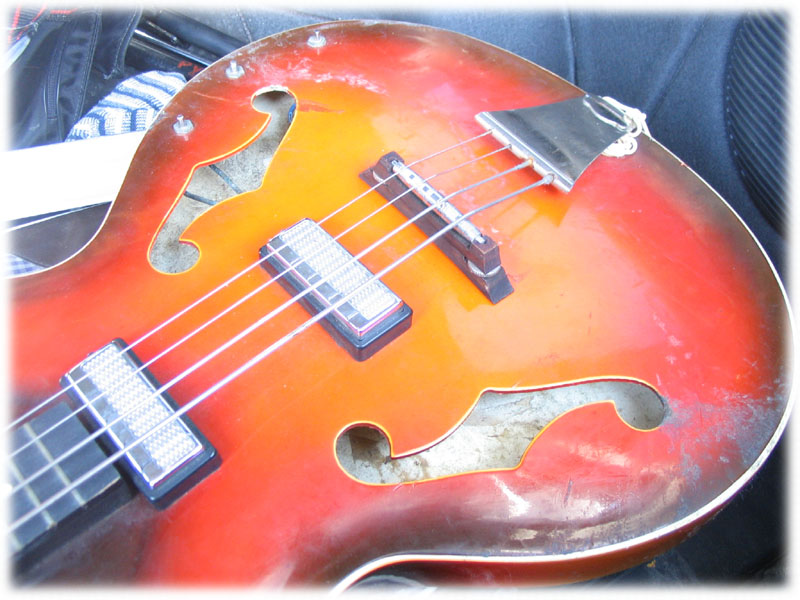 Restoration saw the complete replacement of internal wiring, (the old wires literally crumbled to pieces when you touched them). After comprehensive disassembly, cleaning and re-soldering, the elements of the circuit were very much operational. The pickups were soaked in paraffin, the tailpiece grounded. The action was reduced by thoroughly sanding down the neck heel and readjusting it to its seat. After getting rid of traces of router operations and lacquer streaks and sanding off just a thin layer of the wood, I was able to achieve at least some semblance of playability. The body repairs were the hardest. While re-gluing the brace that had come off and turned into a rattling mess was a quick-and-easy job, the recovery of the body finish took a lot of sweat, literally. 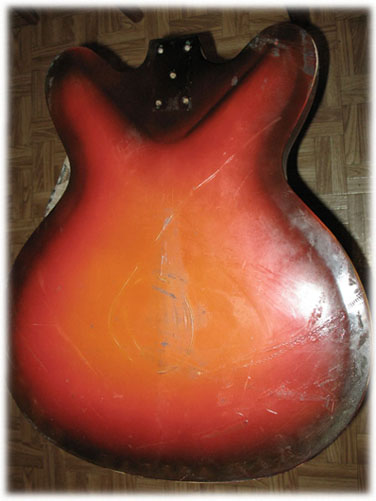 It was only a matter of time and diligence before the smaller scratches and scuffs were polished out. The deeper scarring that wouldn’t yield to sanding and buffing endured as noble wrinkles and traces of a lifetime of high demand. Overall, the body finish is very soft and sensitive. For example, you could leave Maria sitting on a piece of tapestry for a day and the next day you’d find the fabric pattern printed into its back. Whether the root cause of that is the original workmanship or long-term exposure to aggressive fumes remains unknown. And now – back after being repaired and dressed in brand new clothes – please welcome Maria, a bass guitar from the eponymous set. Body type: Semi-Acoustic, scale length - 760 mm. 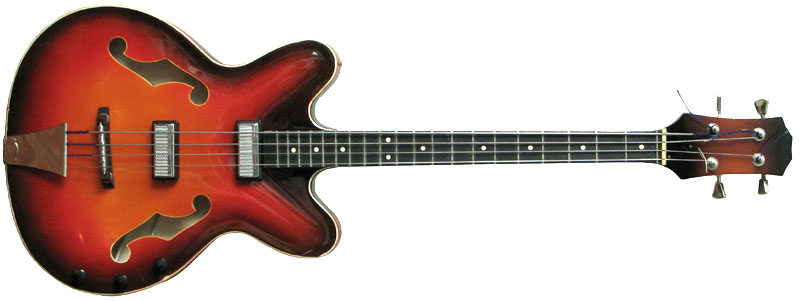 The body is glued from sheets of white 3 mm polystyrene. Yet the top and the back have an unusual profile. Besides the body being an archtop shape, each bout is also an archtop in its own right. Inside the body is reinforced with three wooden braces: two on the soundboard, one on the back. The sides are also reinforced with an additional sheet of polystyrene. However, the second sheet is only 1/2 or 2/3 of the width of the side. The neck joint is an oddball sandwich of several blocks of wood. 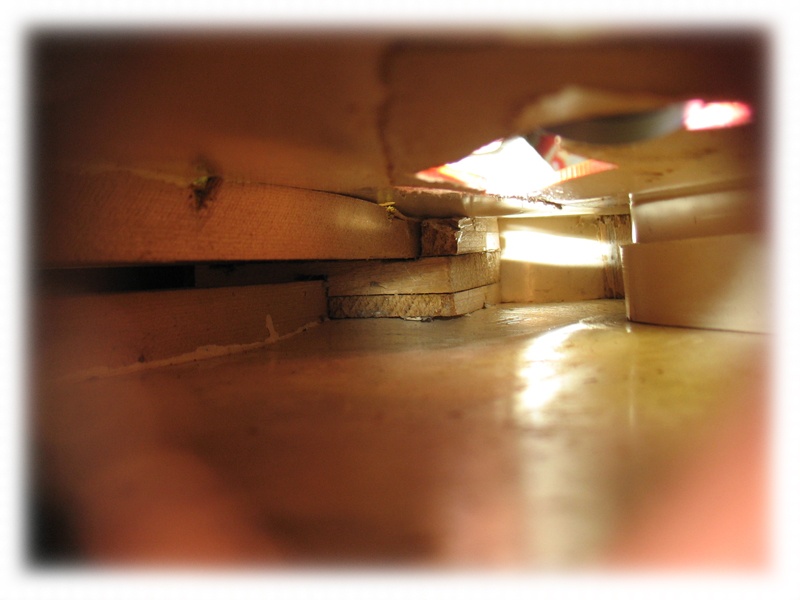 A certain amount of wood is also found in both of the bouts. While the need to attach a strap button can be used as rationale for wood in the upper bout, it’s unclear what the block is doing in the lower bout. I could be reading too much into what the national guitar industry had in mind when I suggest that it was done with left-handed bass players in mind, so that there would be a place for them to attach the strap button when flipping the instrument around. The glue that holds it all together is Elmer’s Glue or Bustilat (a carboxymethylcellulose-based adhesive – translator’s note). 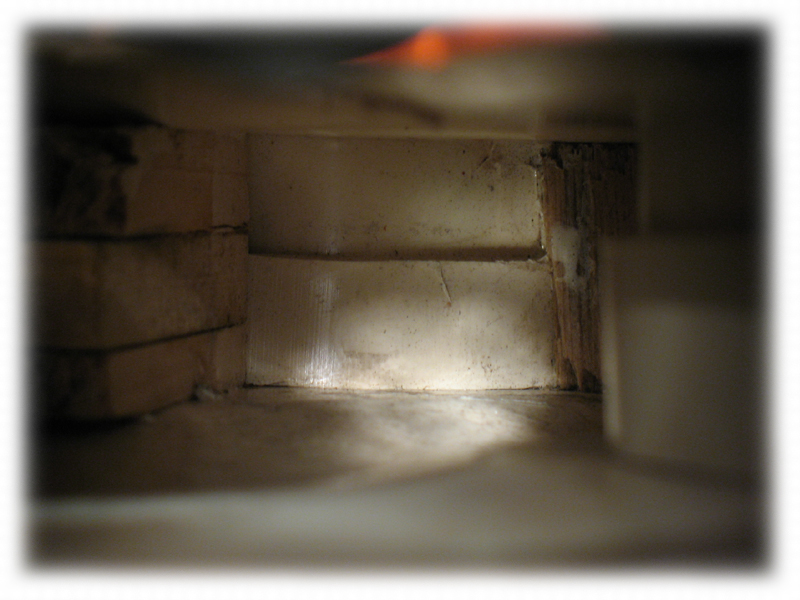 No wonder then that given such a controversial inner world, Maria has a whimsical, ever-changing nature, as if to justify her female name. For several days after stringing it, I’d have to tune it twice a day only to see it go continuously out of tune while the instrument was left alone sitting in the corner. It took Maria about a week to calm down enough to be playable in the “couch potato bassist” mode. Subsequently, given lax conditions of playing at home, Maria does well when tuned up once a week. It’s doubtful that her intonation can handle a regular practice (let alone gigging) schedule. There are wide f-holes cut into the soundboard that to me look pretty rough. But that extra width facilitates electronic components assembly inside the body. The body has a bright, festive, orange-y sunburst finish. The soundboard is bound in white, though it would be more accurate to call it faux binding, because the finish is basically sanded all the way down to the polystyrene around the edge. Inexpensive yet appealing. 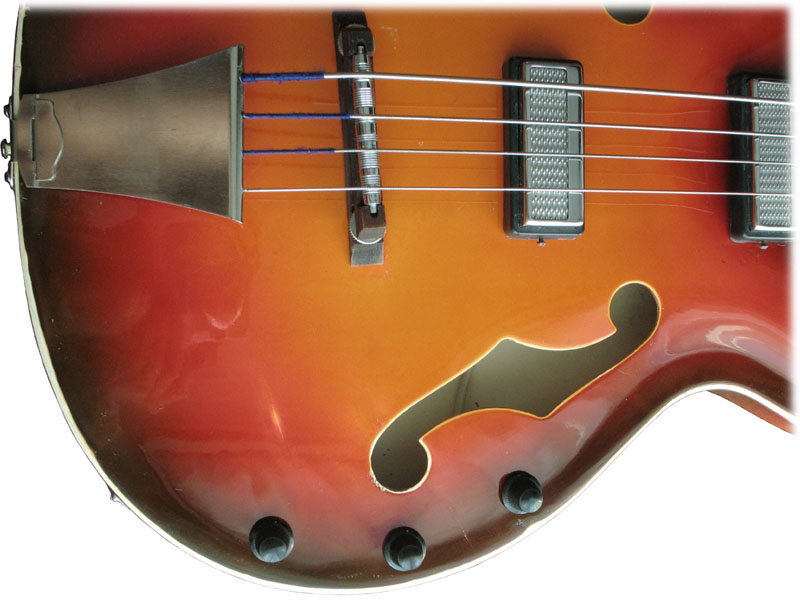 The tailpiece design is similar to the one that its 6- and 12-string sisters are equipped with, sans the decorative slots. The metal is even and smooth, no frills. 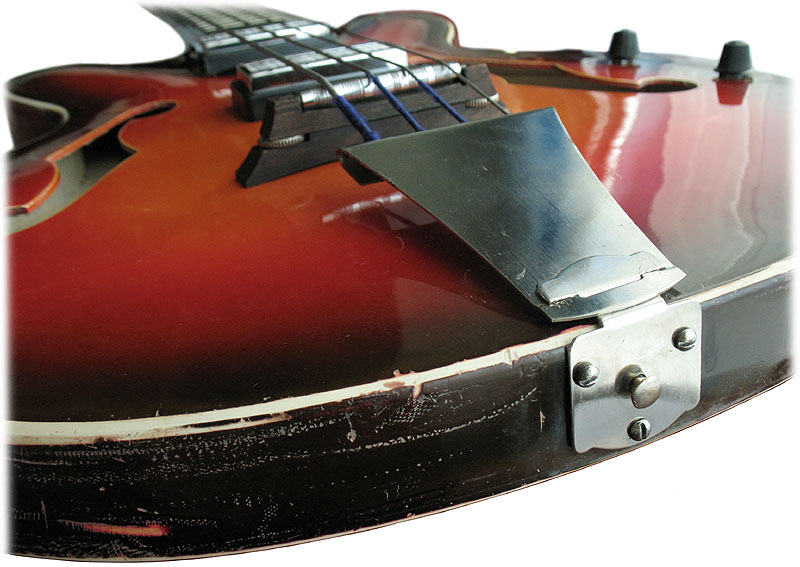 All the guitars in the set have the same two-piece floating bridge, consisting of the wooden base and adjustable top and a bobbin-shaped, circular metal saddle. The bridge is held in place by string pressure and is adjustable for action. A system of collar notches on the saddle allows for string spacing adjustment. 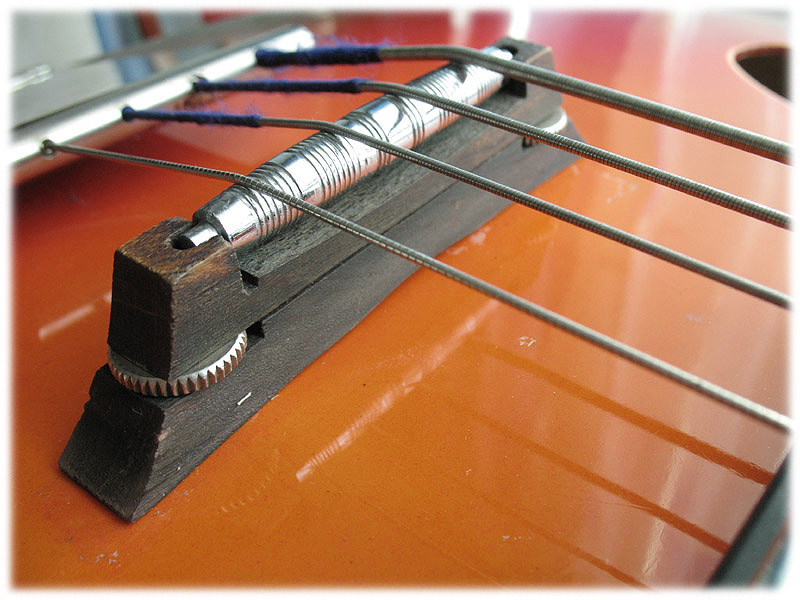 Maria has a three-piece beech neck with an operational truss rod inside, adjustable on the head stock. The neck is 42 mm wide at 1st fret and 48 mm wide around 12th fret. It’s 24 mm deep at 1st fret and 29 mm around 11th fret (the neck heel starts around 12th fret). The neck is attached through the metal neck plate using 5 heavy-duty screws. The 20-fret (plus zero fret) beech fretboard is painted black. The frets are thin and low and bear unfortunate signs of having crossed paths with a file. The round dots are made of plastic.  Some neck-to-body pitch (if measurements are taken on the fretboard) appears only at 12th fret. Since hardly anybody will dare to play Maria higher than that, from the fretboard standpoint it may be considered a zero-angle neck. 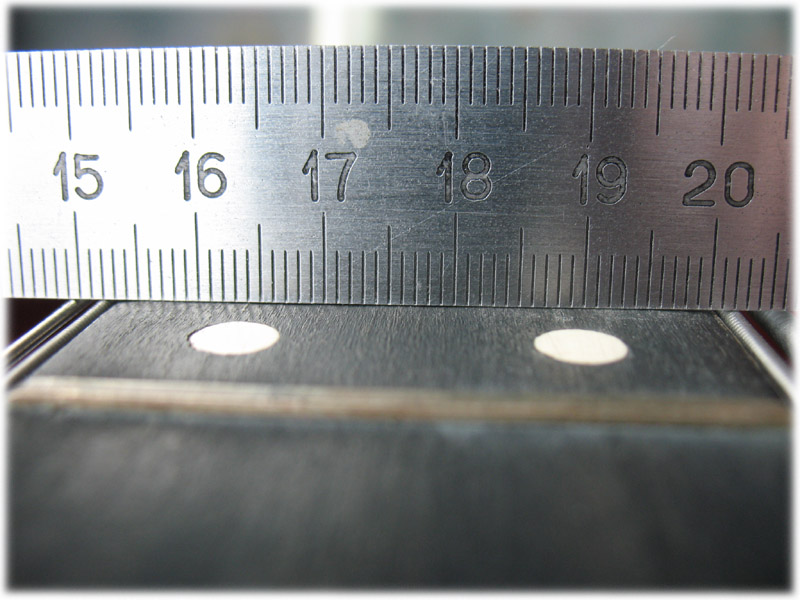 The headstock is wide and shovel-shaped with a 2X2 tuner configuration. The truss rod adjustment nut cover plate is a crooked ordeal made of black plastic. Open tuning machines are standard for Soviet bass guitars. After thorough refitting of components, the tuners lose most of the leeway. Both the cover plate and the tuners are attached using the “drive-the-screws-with-a-hammer” technique. I can’t think of how else to explain an assembly process that has the screw slots smashed with a vengeance: half of the screws are loose and the other half won’t come out. There are washers slipped under the tuner caps that were not there originally, most likely intended to conceal scratches. It doesn’t hurt the Maria’s appearance and so I decided to keep them. 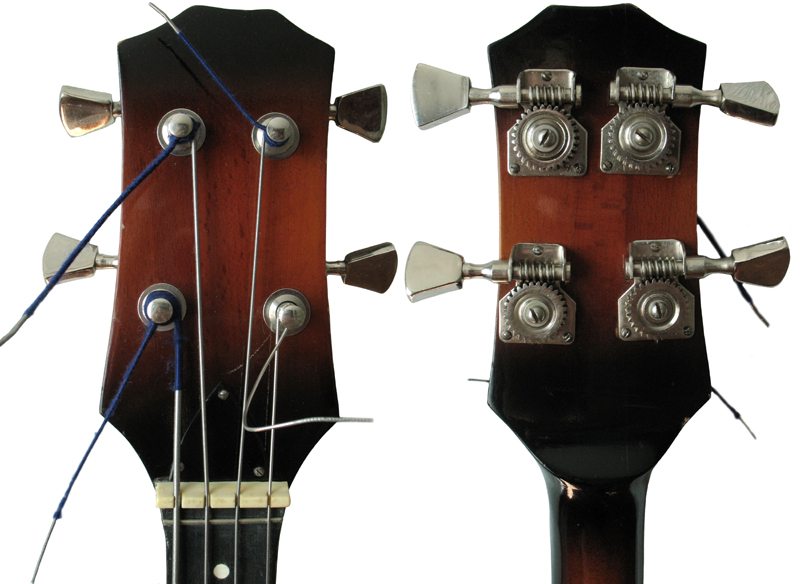 There’s almost no headstock angle relative to the fretboard. The design does not include a string retainer. All this has a potential to create certain problems related to open strings buzzing and intonation in general. 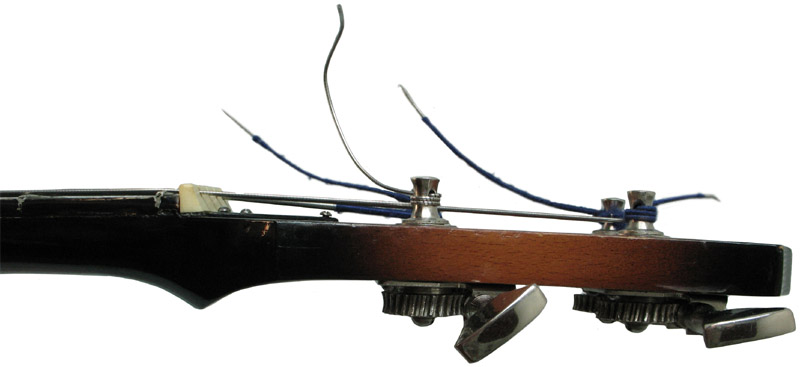 Strap buttons are screws with a mushroom-shaped head. One such screw is attached to the wood block inside the upper bout, the other one through the tailpiece block and into the bracing on the back. The size of the strap buttons is such that a bass player would have to be foolish to use them without altering. 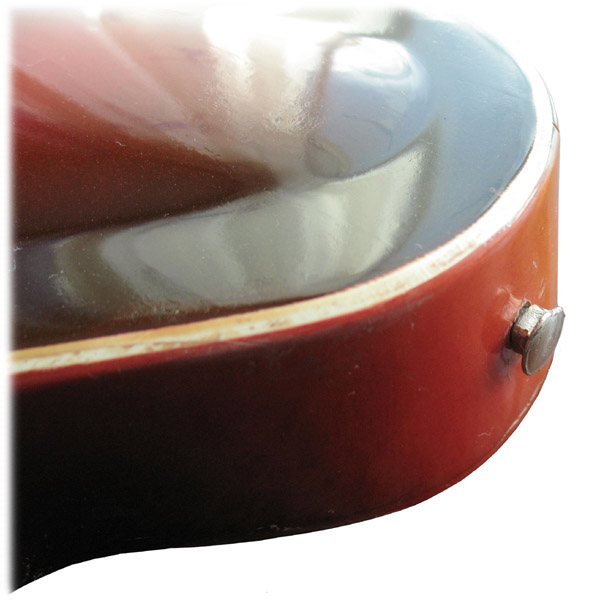 Maria’s circuit features two single-coil pickups, identical for the entire set, and the most basic of controls. The circuit diagram is simple and robust. Separate volume controls for each pickup and one tone control which actually serves to merely cut off hi-frequency background noise. Plus, my Maria had no string grounding to speak of. 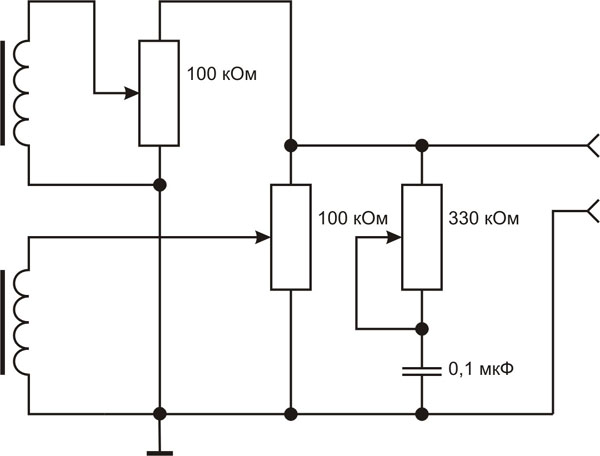 The pickups in metal housings with grill-like faces are mounted on a baseplate made of black plastic. 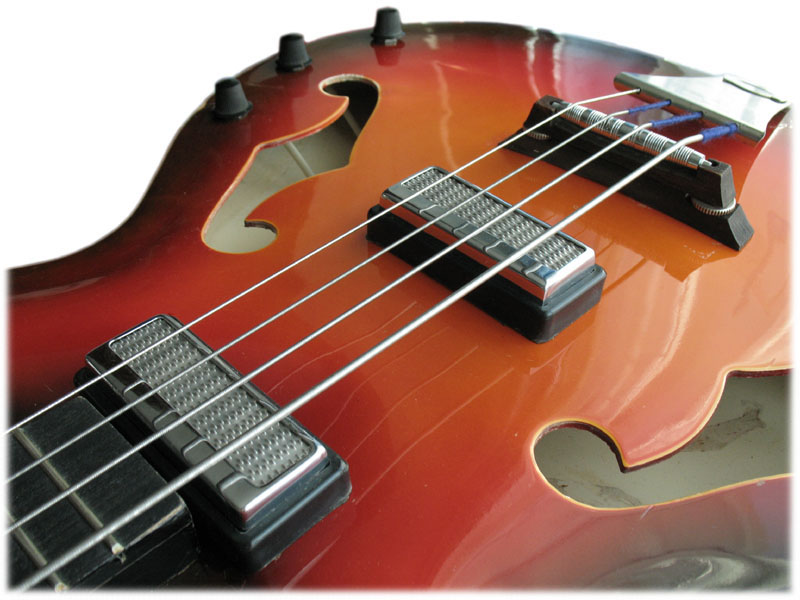 The baseplate is screwed through the soundboard and into the braces. The neck pickup baseplate has a peculiar bottom profile as if intended for an archtop. 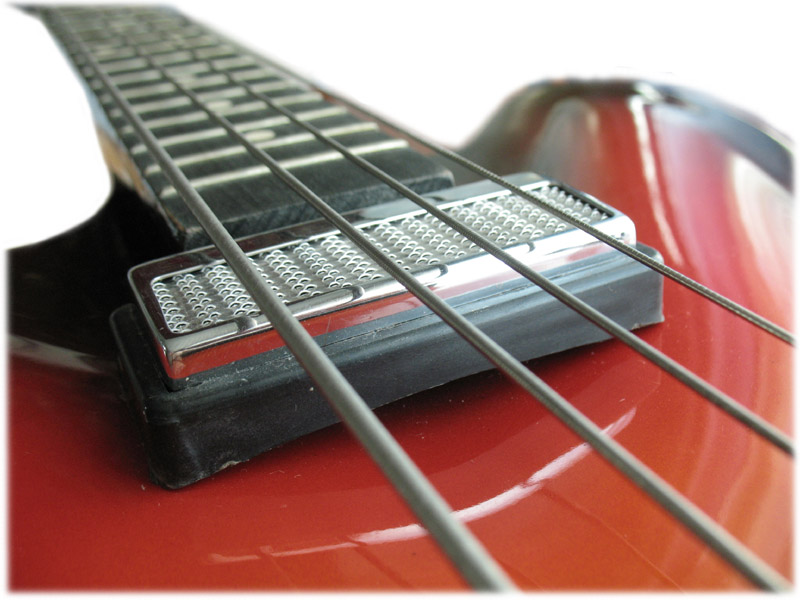 Mounting screws are used to fasten the pickups to the baseplate. 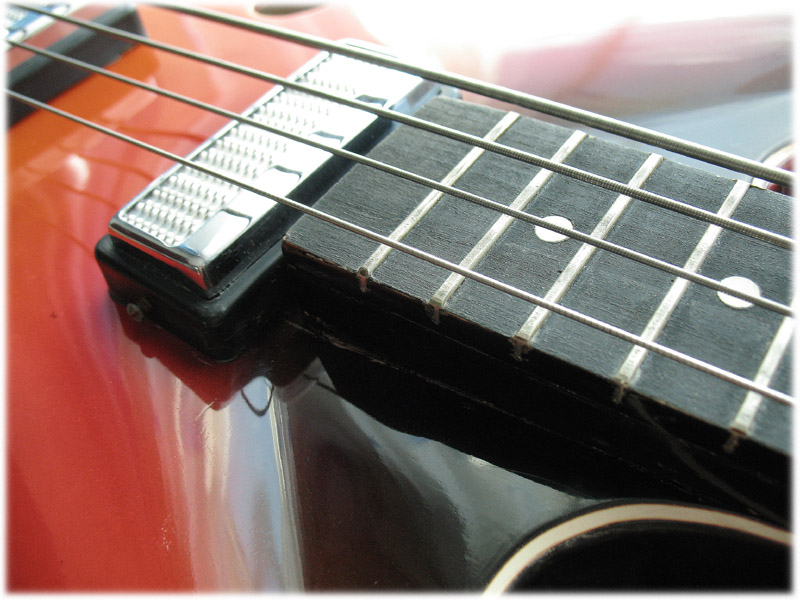 Pickups from different batches can vary as far as the color of the baseplate (white ones have been encountered). On some instruments the pickups are fitted into the baseplate without any mounting screws and are held by friction. The puzzle of restoring a chronological order (or any other order, for that matter) in the Leningrad pickup design is yet to be resolved. Shielded insulated wires send the signal from the pickups to the volume and tone controls mounted on a metal plate. Curiously enough, the pots are wired in such a way that in order to increase the volume you have to turn it counterclockwise. (photo before restoration)  Apparently, the metal plate became standard on the later Marias, as it was used on both the 6- and 12-string guitars of the set.  Output jack is a standard Soviet DIN-3 (DIN-5). The original knobs are lost. I used the ones I could dig up the quickest, making sure they don’t stand out too much. 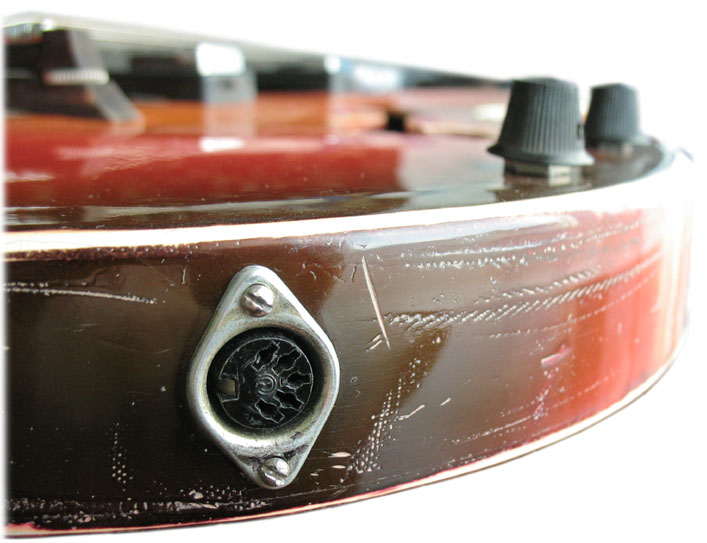 And so the bottom line is that the encounter with the instrument went as follows. In its original condition, Maria is not much more than a flashy toy, an eye-catching interior decoration piece. After investing some time, money and effort – nothing too critically invasive from the design standpoint – you can end up with a working bass guitar mockup. In order to use it as originally intended though, you’ll have to fully disassemble and, basically, rebuild the instrument from scratch. But even given that, using Maria as a musical instrument for performing the most rudimentary parts is a true rock’n’roll feat. And I am not being ironic. Unplugged, Maria is capable of producing a very low tone that is special only in the way that it sounds louder than other Soviet bass guitars played unplugged. However, once you plug it in, Maria generates a slightly muffled bass tone that is quite decent by the Soviet standards. By the way, I was able to identify the one superior quality of polystyrene over other materials: when disassembled, the plastic body can be washed with detergents in running water, both inside and out, without any fear. Everyone who’s ever repaired a semi-acoustic knows how challenging it is sometimes to get to and get rid of whatever is hidden inside. Todo pasara, Maria!, as Afric Simon, the cheerful white-toothed fellow from Mozambique, sang in a song from my socialist childhood. All has passed, Maria! is what I say today. You and your sisters have made history thanks to your fascinating, one-of-a-kind selves. Personally, I insist that this flamboyant, attractive (if absolutely helpless) beauty will make a great addition to any serious collection while hardcore collectors are highly encouraged to acquire the whole set. 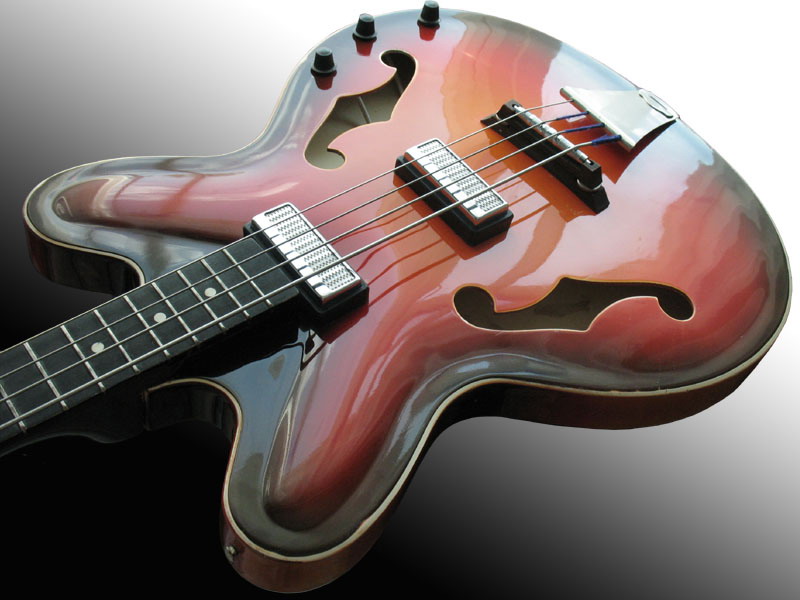 Sincerely, VP. October 2009. Translated by Ilya Shlepakov, 2011 © [ Редактирование 23.03.2011, 16:45 ] Ваше шило, наше мыло: [link] [link] | ||
| Наверх |
|
| EjiK |
| ||
  Зарегистрирован: 03.10.2006, 15:55 Местонахождение: Мск Сообщений: 802 | very nice keep on posting свои статьи присылайте sovietguitars.adm©ya.ru мой ВК vk.com/yojikmusic | ||
| Наверх |
|
| VP |
| ||
 Зарегистрирован: 25.01.2007, 11:02 Местонахождение: Новосибирск Сообщений: 6406 | Ит из сплендид, ай сынк. Ай ноу со мэни нью инглиш вёрдз нау. Вэйтин' форэйн инглишспикерз. | ||
| Наверх |
|
| [dms-71] |
| ||
 Зарегистрирован: 28.08.2009, 12:01 Местонахождение: Новосибирск Сообщений: 4257 | ha-ha  --- Я ВКонтакте Моя почта - dms-71(A)yandex.ru | ||
| Наверх |
|
| Stanley Scott |
| ||
| Гость | Well Done, Sir! | ||
| Наверх |
|
| shlepakoff |
| ||
ilya   Зарегистрирован: 29.06.2009, 18:33 Местонахождение: Houston-Москва Сообщений: 3971 | Stanley Scott Цитата ... Well Done, Sir! Welcome, Sir! Good to have neighbors around here:) Got your email, those are some wild guitars, I will make sure to post these pictures later today. [ Редактирование 22.08.2011, 20:22 ] Ваше шило, наше мыло: [link] [link] | ||
| Наверх |
|
| Модераторы: violet, EjiK, Басист Кайф, Я-Ха, Izol, SPA, shlepakoff, byte_crow |
Powered by e107 Forum System
| Мини-чат |
Вы должны войти, чтобы отправлять комментарии на этот сайт - пожалуйста, либо войдите, либо - если вы еще не зарегистрированы - щелкните  Skyworker79 Skyworker7915.04. : 15:30 Надеюсь,кто то из форумчан успел приобрести и мы увидим хорошие слайды! [link] Посмотреть все сообщения (118947) |
| Поиск Советские гитары |
| Счетчики |
|
|
© 2006 - 2024 SovietGuitars.com - Общество Коллекционеров Советских Электрогитар. Сайт не является СМИ. 18+
Техническое обслуживание сайта осуществляется веб-студией «Код-А»



